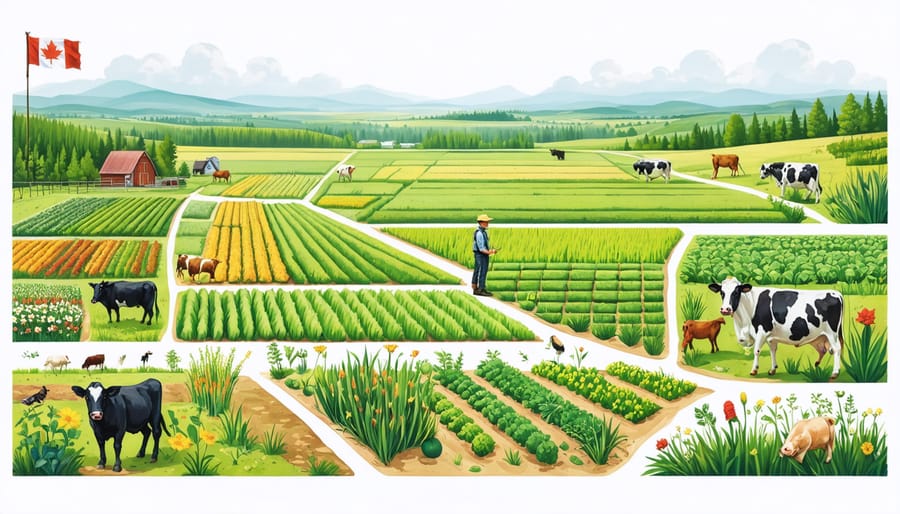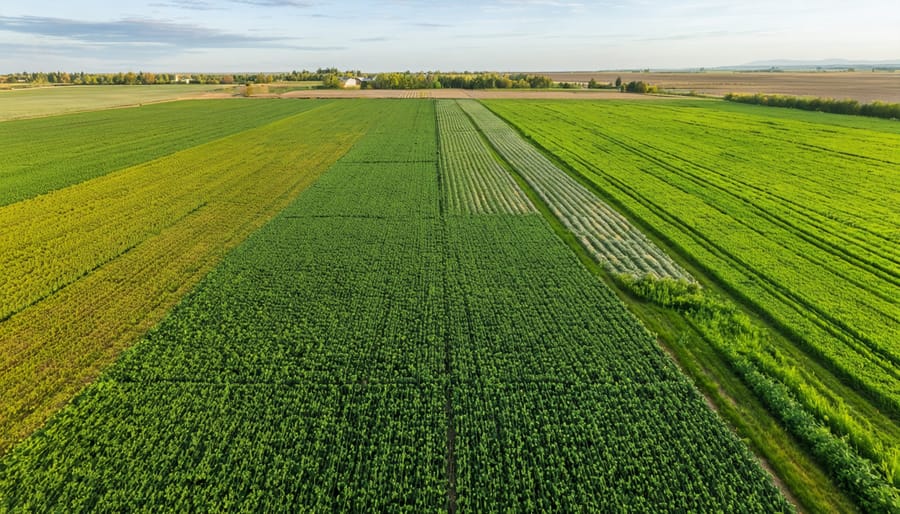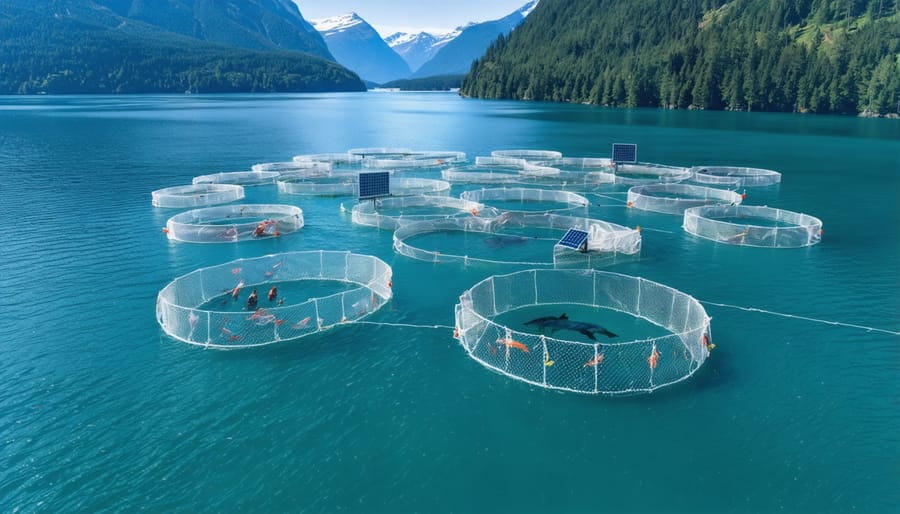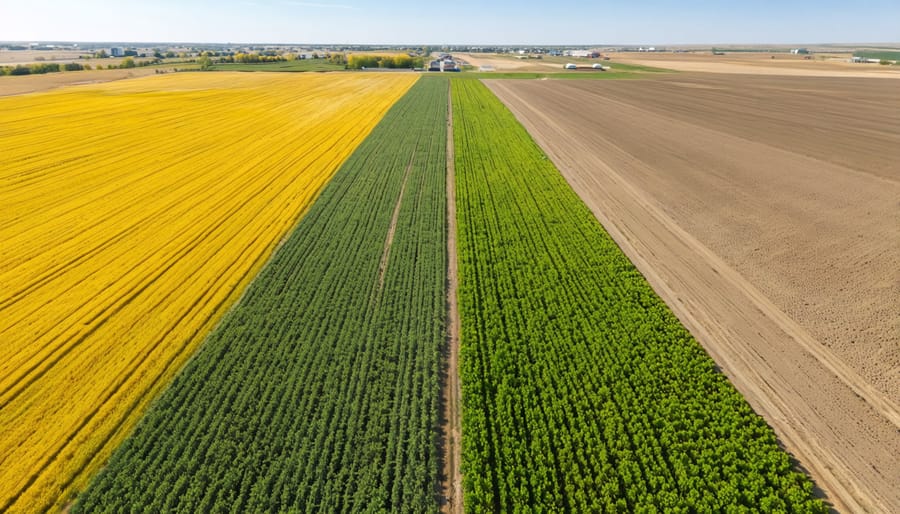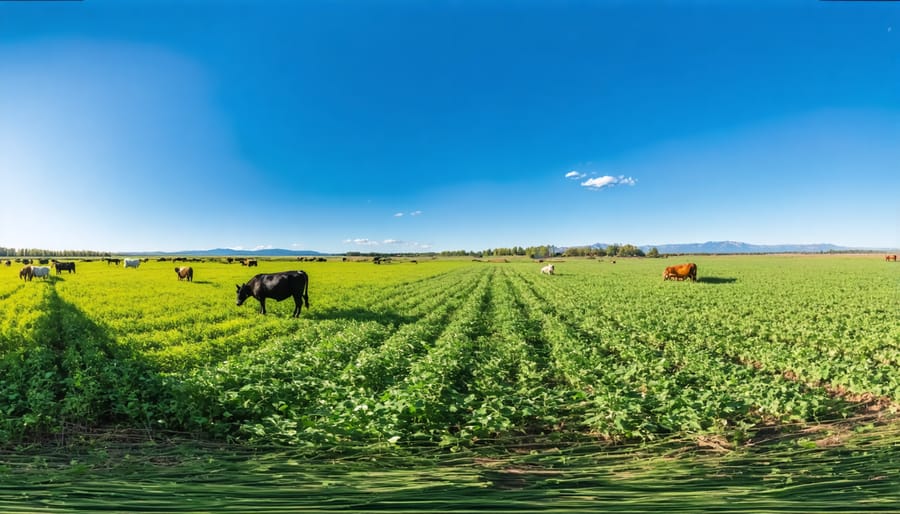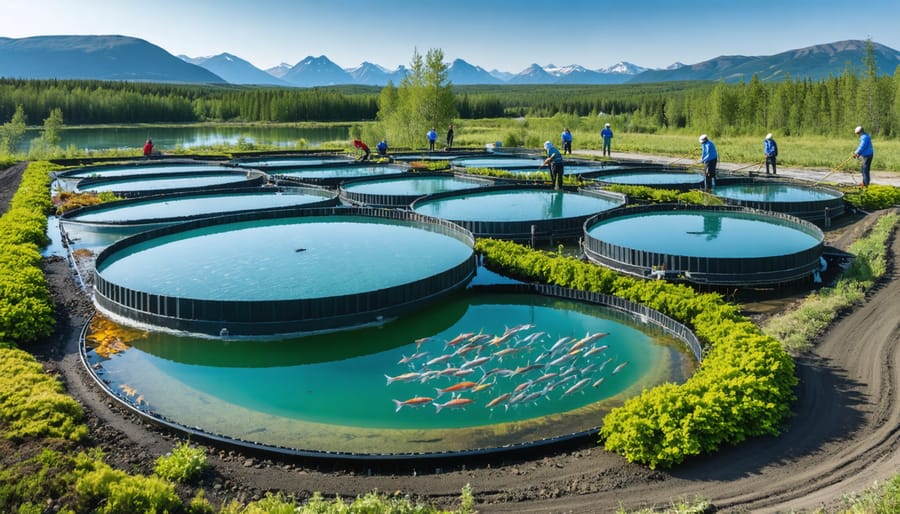Agroecology transforms conventional farming into resilient sustainable food systems by integrating ecological principles with traditional agricultural knowledge. On Alberta’s diverse landscapes, from the prairie grasslands to the parkland regions, this science-based approach mimics natural ecosystems to enhance farm productivity while protecting environmental resources. Farmers across Canada are discovering how agroecological methods—like intercropping canola with pulse crops, establishing beneficial insect corridors, and implementing rotational grazing—can increase yields while reducing input costs by up to 30%.
Unlike conventional farming, agroecology views each farm as a unique ecosystem, where every component—from soil microorganisms to weather patterns—plays a crucial role in crop success. This holistic approach has helped Prairie farmers maintain productivity during drought years while building long-term soil health and biodiversity. For Canadian producers facing increasing climate uncertainties and market pressures, agroecology offers practical solutions that blend time-tested farming wisdom with modern ecological science, creating resilient agricultural systems that benefit both the land and the farmer’s bottom line.
The Science Behind Agroecology: Nature’s Blueprint for Farming
Core Principles of Agroecology
Agroecology builds on five core relationships that form the foundation of sustainable farming: soil health, biodiversity, water conservation, energy efficiency, and community integration. At its heart, healthy soil management promotes beneficial microorganisms and organic matter content, creating resilient growing conditions that naturally suppress pests and diseases. This approach aligns perfectly with zero-waste agricultural practices increasingly adopted across Alberta’s farming communities.
The integration of diverse crops and livestock creates natural synergies, where animals contribute to fertility while crops provide feed and shelter. Water conservation practices, such as efficient irrigation systems and soil moisture retention techniques, are particularly crucial for Prairie farmers dealing with variable rainfall patterns.
Energy efficiency is achieved through reduced tillage, optimal equipment use, and renewable energy integration. Perhaps most importantly, agroecology emphasizes strong connections between farmers, consumers, and local communities, fostering knowledge sharing and creating resilient local food systems that benefit everyone involved in the agricultural chain.
Beyond Organic: The Agroecological Advantage
While organic farming represents a significant step towards sustainability, agroecology takes environmental stewardship even further. Where conventional farming often relies on external inputs and single-solution approaches, and organic farming focuses primarily on eliminating synthetic chemicals, agroecological methods embrace the entire ecosystem’s complexity.
Consider a typical Alberta grain farm: Under conventional management, it might depend heavily on chemical fertilizers and pesticides. An organic approach would replace these with natural alternatives but might still maintain a similar operational structure. In contrast, an agroecological system might integrate livestock rotation, incorporate native prairie plants as windbreaks, and establish beneficial insect habitats – creating a robust, interconnected system that naturally enhances soil health and pest resistance.
What sets agroecology apart is its holistic perspective. Rather than simply substituting inputs, it redesigns the farming system to maximize natural synergies. This approach typically results in greater resilience to climate extremes, reduced input costs, and improved long-term soil health – advantages that go beyond standard organic certification requirements.

Building Resilient Food Systems Through Agroecology
Climate Adaptation Strategies
Alberta’s unique climate challenges require specific adaptation strategies to build resilient agricultural systems. With increasingly unpredictable weather patterns, farmers across the province are implementing innovative techniques to protect their crops and soil health.
Windbreaks and shelterbelts have proven particularly effective in our prairie environment, reducing soil erosion and providing wildlife habitat. Many Alberta farmers are incorporating diverse native tree species like poplar and spruce, which help manage snow distribution and protect sensitive crops from harsh winds.
Water management is crucial in our semi-arid climate. Successful adaptations include implementing efficient irrigation systems, building water retention ponds, and using drought-resistant crop varieties. Some farmers are experimenting with keyline design, a landscape planning system that maximizes water retention and distribution across farmland.
Cold-hardy crop selection and season extension techniques are essential strategies. Local farmers report success with cold frames, row covers, and high tunnels to extend growing seasons. Indigenous crop varieties, particularly adapted to our northern climate, are gaining popularity among Alberta producers.
Soil building practices like cover cropping and reduced tillage help retain moisture and improve resilience to both drought and flooding. Many farmers are timing their planting schedules around frost dates and incorporating intercropping systems to spread risk across different crop types.
These strategies work together to create farming systems that can withstand climate variations while maintaining productivity and ecological health.
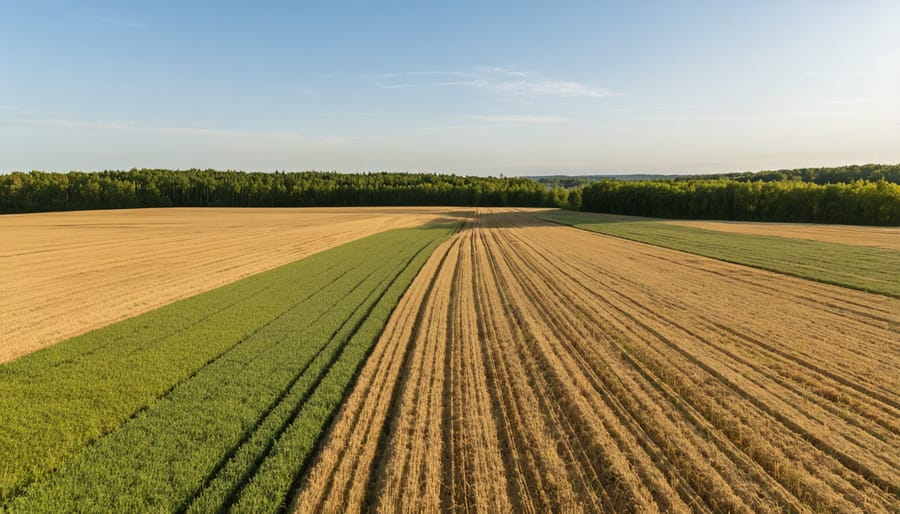
Economic Benefits for Canadian Farmers
Adopting agroecological practices offers substantial financial benefits for Canadian farmers, particularly through reduced input costs and increased market opportunities. Many Alberta farmers have reported 20-30% savings on fertilizer expenses by implementing circular farming systems and crop rotation strategies. These savings extend to decreased pesticide use, with some operations cutting chemical costs by up to 40% within three years of transition.
Market premiums for sustainably produced crops continue to grow, with organic and regeneratively grown products commanding 15-25% higher prices in both domestic and international markets. Local food networks and direct-to-consumer sales channels have expanded significantly, allowing farmers to capture a larger share of the food dollar while building community connections.
Saskatchewan grain farmer Tom Anderson shares, “Since implementing agroecological practices five years ago, we’ve cut our input costs by $75 per hectare while maintaining yields. The soil improvements we’re seeing suggest even better returns ahead.” Similar success stories are emerging across the prairies, where farmers are discovering that working with nature rather than against it creates both environmental and economic resilience.
Cost-sharing programs and certification opportunities through provincial agricultural departments provide additional financial support for farmers transitioning to agroecological methods, making the initial investment more manageable and the long-term benefits more accessible.
Practical Implementation on Alberta Farms
Success Story: Mixed Farming in Central Alberta
The Thompson family farm, located just outside of Red Deer, Alberta, demonstrates how agroecological principles can transform conventional farming operations into resilient, sustainable enterprises. Over the past decade, Sarah and Mike Thompson have successfully integrated livestock, crops, and natural habitat management on their 640-acre farm.
The Thompsons began their transition by introducing rotational grazing for their cattle herd, moving them through different pastures every few days. This practice has significantly improved soil health and reduced feed costs by 30%. They’ve integrated their grain production with their livestock operation, using cattle to graze cover crops during fall and winter months, which has eliminated the need for chemical fertilizers in most fields.
Their diverse crop rotation includes wheat, barley, peas, and oats, interspersed with pollinator-friendly flowering plants. This approach has increased beneficial insect populations and reduced pest pressure, allowing them to cut pesticide use by 75%. The family has also maintained natural wetlands and established wildlife corridors, which provide habitat for native species and help with natural pest control.
The results speak for themselves: soil organic matter has increased from 2% to 5% in just eight years, water retention has improved dramatically, and their farm has remained profitable even during drought years. The Thompsons now host regular field days, sharing their experiences with other Alberta farmers interested in agroecological practices.
“The key to our success has been thinking of our farm as an ecosystem rather than just a production facility,” says Sarah Thompson. “Every decision we make considers how it will affect the entire system, from soil microbes to wildlife to our bottom line.”

Starting Your Agroecological Journey
Beginning your transition to agroecological practices doesn’t have to be overwhelming. Start by assessing your current farming operation and identifying areas where you can gradually implement sustainable changes. Many successful Alberta farmers have found that starting small and scaling up over time leads to the most sustainable outcomes.
First, conduct a thorough soil health assessment. Understanding your soil’s composition, organic matter content, and biological activity provides a foundation for implementing resource-efficient farming methods. Consider working with local agricultural extension services or soil specialists who can help interpret results and suggest appropriate amendments.
Next, identify potential ecological partnerships within your existing system. This might involve introducing companion planting, establishing beneficial insect habitats, or integrating livestock into your crop rotation. Many Alberta farmers have successfully paired cattle grazing with cover crops, maximizing both soil health and economic returns.
Create a practical timeline for implementation. Consider:
– Season 1: Introduce cover crops on a small plot
– Season 2: Experiment with reduced tillage practices
– Season 3: Integrate beneficial insects and natural pest management
– Season 4: Expand successful practices to larger areas
Connect with other farmers in your region who are practicing agroecology. The Alberta Organic Producers Association and local farming networks offer valuable mentorship opportunities and practical insights. Learning from others’ experiences can help you avoid common pitfalls and accelerate your success.
Document your progress through soil tests, yield measurements, and photo monitoring. This data will help you evaluate the effectiveness of your changes and make informed decisions about scaling up successful practices.
Remember that transitioning to agroecological methods is a journey of continuous learning and adaptation. Focus on building resilience into your system while maintaining profitability, and don’t hesitate to adjust your approach based on your farm’s unique conditions and needs.
Common Challenges and Solutions
While transitioning to agroecological practices offers numerous benefits, Canadian farmers often face several key challenges. Understanding these obstacles and their solutions can help smooth the path to successful implementation.
One common challenge is the initial learning curve and time investment required to understand new ecological systems. Many Alberta farmers have found success by starting small, converting just a portion of their land to test new methods. Joining local farmer-to-farmer networks and participating in field days has proven invaluable for knowledge sharing and practical support.
Weather uncertainty and climate variability pose significant challenges, particularly in Alberta’s diverse growing conditions. Farmers are addressing this by implementing diverse crop rotations and incorporating drought-resistant varieties. Installing windbreaks and maintaining soil cover have also helped protect against extreme weather events.
Financial constraints during the transition period represent another hurdle. Solutions include accessing government support programs, exploring cost-sharing initiatives with neighbouring farms, and gradually implementing changes to spread costs over time. Many farmers report that reduced input costs eventually offset initial investments.
Market access can be challenging when shifting to agroecological practices. Successful strategies include developing direct-to-consumer relationships, joining cooperative marketing groups, and pursuing organic certification when appropriate. Several Alberta farmers have found success by creating value-added products from their diversified operations.
Pest and weed management without conventional chemicals initially concerns many farmers. Effective solutions include implementing integrated pest management, using cover crops for weed suppression, and maintaining beneficial insect habitats. Regular soil testing and monitoring help farmers make informed decisions about biological controls and natural alternatives.
Agroecology represents a powerful path forward for Canadian agriculture, offering multiple benefits that enhance both farm productivity and environmental stewardship. Through the implementation of agroecological practices, farmers across Alberta and beyond have demonstrated that it’s possible to maintain profitable operations while building more resilient agricultural systems.
The evidence is clear: farms utilizing agroecological principles typically show improved soil health, increased biodiversity, and better water retention. These benefits translate into tangible advantages, including reduced input costs, greater crop resilience during extreme weather events, and more stable yields over time. Moreover, many farmers report increased market opportunities through diversified production and premium pricing for sustainably grown products.
For those considering the transition to agroecological practices, the time to act is now. Climate change and market pressures make it increasingly important to adopt farming methods that protect both your bottom line and the environment. Start small by implementing one or two practices, such as cover cropping or integrated pest management, and gradually expand as you become more comfortable with the approach.
Resources and support are readily available through local agricultural extension services, farmer-led organizations, and research institutions across Canada. Many successful agroecological farmers are willing to share their experiences and mentor others in their journey. Consider joining a local farmer network or attending field days to learn from those who have already made the transition.
Remember, agroecology isn’t just about changing farming practices – it’s about being part of a larger movement toward more sustainable and resilient food systems. By embracing agroecological principles, you’re not only investing in the future of your farm but also contributing to the long-term health of Canadian agriculture and our communities.
Take the first step today. Reach out to local agricultural advisors, connect with experienced agroecological farmers in your area, or start researching which practices might work best for your operation. The transition to agroecology is a journey worth taking, and the benefits to your farm, the environment, and future generations make it a compelling choice for forward-thinking Canadian farmers.

